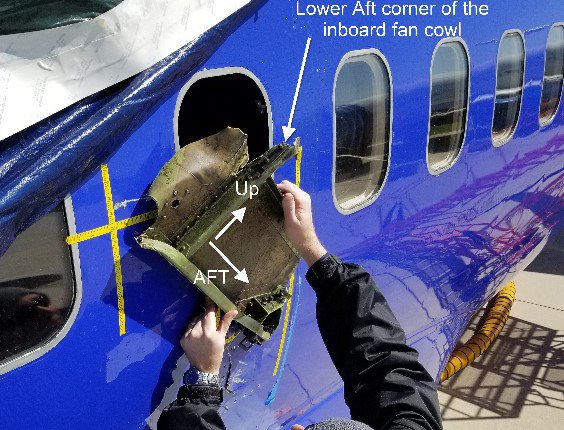


Uncontained engine failures are always painful, FBO (Fab Blade Out) events in the past has shown that they can be fatal as well !
Boeing is preparing a set of three safety enhancements in the form of service bulletins to the engines on its popular B737 Next Generation models to prevent debris from escaping during a failure, according FAA.
The Federal Aviation Administration outlined the fixes in a letter to the National Transportation Safety Board, dated April 2.
The NTSB had recommended improvements in the engine designs after a chunk of metal flew off a Southwest Airlines engine over Pennsylvania on April 17, 2018, killing a woman who was seated where the metal hit a window.
The Probable Cause of the accident was determined as
“a low-cycle fatigue crack in the dovetail of fan blade No. 13, which resulted in the fan blade separating in flight and impacting the engine fan case at a location that was critical to the structural integrity and performance of the fan cowl structure (and which) led to the in-flight separation of fan cowl components, including the inboard fan cowl aft latch keeper, which struck the fuselage near a cabin window and caused the window to depart from the airplane, the cabin to rapidly depressurise and the passenger fatality”.
In one of the requirements , Federal Aviation Administration had asked Boeing to determine the critical fan blade impact location(s) on the CFM56-7B engine fan case and redesign the fan cowl structure on all Boeing 737 next-generation series airplanes to ensure the structural integrity of the fan cowl after a fan-blade-out event.

Once Boeing finalises what are known as service bulletins instructing operators how to strengthen the smooth aerodynamic surface at the front of the engine that guides air into the turbine, the FAA plans to mandate them, the agency said in the letter.
The FAA anticipated last April that Boeing would finalise the bulletins by July, though such work is often delayed.
Several recent episodes in which debris broke loose from the engine inlets have prompted a move to strengthen those areas on 737 NG and some 777s.
“We continue to work with the FAA on potential design changes,” Boeing said in an emailed statement.
